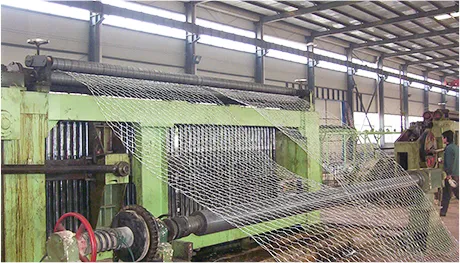-
 Phone:
Phone: -
 Email:
Email:

rockfall netting
The Importance of Rockfall Netting in Natural Hazard Mitigation
Rockfall hazards pose significant threats to infrastructure, ecosystems, and human safety, particularly in mountainous and hilly regions. One of the most effective measures to mitigate these risks is the installation of rockfall netting. This engineering solution plays a crucial role in stabilizing loose rock and preventing boulders from falling onto roads, buildings, and other critical areas. In this article, we will explore the mechanics of rockfall netting, its applications, and its importance in ensuring safety and environmental protection.
Understanding Rockfall Netting
Rockfall netting is a protective system designed to catch and contain falling rocks. Typically made from high-tensile strength steel or synthetic materials, these nets are engineered to withstand the impact of falling debris. The mesh density and structure can vary depending on the specific geological conditions and the volume of potential rockfall. The installation of rockfall netting involves careful site assessment and planning to ensure optimal performance and durability.
The primary function of rockfall netting is to intercept and capture falling rocks before they reach the ground. This can significantly reduce the risk of injury to people and damage to property. Additionally, rockfall netting can help maintain the stability of slopes by preventing further erosion and rock movement, thereby promoting long-term geological stability.
Applications of Rockfall Netting
Rockfall netting is widely used in various settings where rockfalls are a concern. Highways and railways that traverse mountainous terrain frequently utilize rockfall netting along their routes to enhance safety for vehicles and passengers. In areas near construction sites or urban development, netting helps protect workers and pedestrians from potential rockfall incidents.
rockfall netting

Moreover, rockfall netting is also employed in recreational areas, such as hiking trails and climbing routes. By mitigating hazards, it allows outdoor enthusiasts to enjoy activities with a reduced risk of rock-related injuries.
The versatility of rockfall netting extends to its use in combination with other slope stabilization techniques. For instance, it can be paired with soil nails, shotcrete, or retaining walls to further enhance the stability of slopes prone to rockfalls. This integrated approach is essential for areas with a high risk of geological instability.
Environmental Considerations
When it comes to implementing rockfall netting, environmental considerations are paramount. It is essential to conduct environmental impact assessments to understand how netting systems may affect local wildlife and ecosystems. For example, some installations might hinder small animal movement or interfere with plant growth.
To mitigate these effects, engineers and environmentalists work together to design systems that both protect human life and preserve natural habitats. Using biodegradable materials and ensuring that netting systems blend into the natural landscape are methods employed to minimize ecological disturbances.
Conclusion
In conclusion, rockfall netting is an essential component of natural hazard mitigation strategies in rocky terrains. Its ability to prevent rockfalls from causing harm to infrastructure and individuals makes it an invaluable tool in urban planning, transportation safety, and outdoor recreation. As we continue to face the challenges posed by natural hazards, investing in effective solutions like rockfall netting is crucial. By enhancing the safety and stability of vulnerable areas, we can protect our communities and ecosystems for future generations. Understanding and implementing such technologies will also play a significant role in fostering sustainable development in regions susceptible to geological hazards.
-
Wire Mesh for Every Need: A Practical SolutionNewsJul.25,2025
-
Steel Fences: Durable, Secure, and Stylish OptionsNewsJul.25,2025
-
Roll Top Fencing: A Smart Solution for Safety and SecurityNewsJul.25,2025
-
Cattle Farm Fencing Solutions for Maximum SecurityNewsJul.25,2025
-
Affordable Iron Binding Wire SolutionsNewsJul.25,2025
-
Affordable Galvanized Wire SolutionsNewsJul.25,2025
-
Wire Hanger Recycling IdeasNewsJul.25,2025








